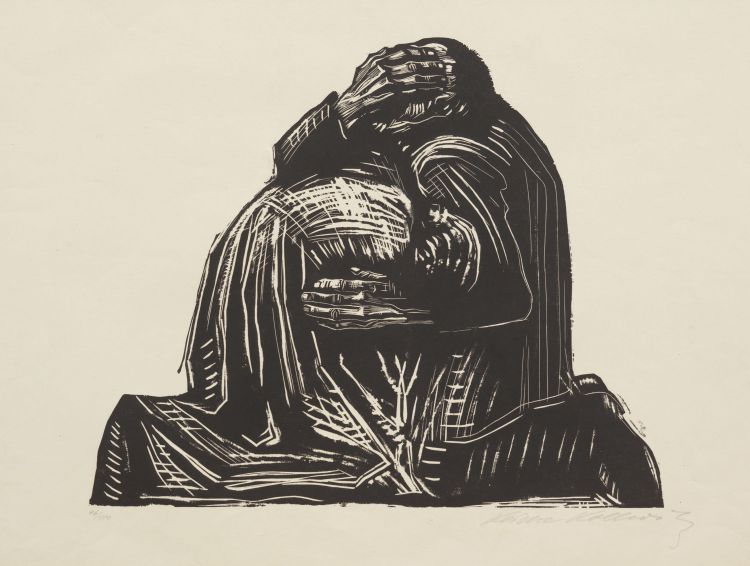Käthe Kollwitz
was a German printmaker who worked in the first half of the twentieth century.
Her work was a reflection of the turbulence in Germany throughout these years:
from Kaiser Wilhelm to World War I to World War II. Her perspective is uniquely
that of a woman, and especially a mother. However, her work did not shy away
from the atrocities of war and poverty. The stark graphic qualities of her work
illuminate the harshness of the subject matter- “her prints show consistent
sensitivity to the purely graphic qualities inherent in her media” (619). The techniques she used the most were
etching, lithograph, and woodcut. In later years, she also made sculptures.
I think it’s
interesting to compare her earlier work with her later work. The earlier work,
mostly etchings, was very naturalistic, as opposed to the later work, which
became more expressionistic.
The first image, Battlefield, is a part of the series, The Peasant’s Revolt (1902-8). The
series is about The Peasant Uprising of 1525. It expresses the anger and
tragedy of this conflict. In this etching, a woman searches amongst the bodies
for her dead son. Her lantern barely casts light on the murky darkness
surrounding the dead. The woman’s large and work-worn hand is rendered
naturalistically to show the burden of the mother in trying to protect her
children for war.
The second image, Death Reaches into a Band of Children,
is a part of her Death series. After the First World War, she moved away from
etchings and toward lithography. The turning point in her art came shortly
after she lost her son in the war. She began to address the subject of poverty
in Germany. Her husband was a doctor working in poor areas of Berlin, which
sensitized her to the plight of impoverished mothers trying to feed families
and to the high infant mortality rates at the time. The style of this
lithograph contrasts highly with her more tightly controlled etchings. “The
swiftness of the attack is conveyed by the rapidity with which the lithographic
medium has been handled.” The style contributes to the more emotional and
brutal quality to the work. The imagery is much more direct and gestural.
Here is a woodcut
called The Parents, part of her War
series. It’s gestural and graphic qualities make it simple and effective in
portraying the grief of parents who have lost a child to the war.
I believe that Kathe
Kollwitz’s work is successful because it is rooted in the history and politics
of the time and is a direct response to the horrors of war and poverty. It
reveals the struggle of a mother attempting to keep her children safe in times
of war and unrest. Her prints have stood the test of time because of their
historical significance as well as their technical excellence.



No comments:
Post a Comment